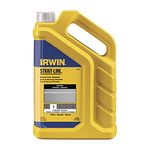Multi-Feature Curved Deck: Framing
Careful planning, copious blocking, and a slew of angled cuts are the keys to success when building a radiused deck.

The trick to framing a cylindrical deck is providing a sound structural foundation while also making sure every cut end of the decking is fully supported. That takes planning and, inevitably, reworking things until you have it right. Screw fasteners help. If you have to revise your framing, it is easy to back out fasteners and start again.
Cutting the joists to a radius means making a multitude of angled cuts. A conventional 90-degree cut is the shortest distance from one side of a board to the other. Vary from 90 degrees and you have a lot more wood to cut through—a sharp angle can be like cutting through an 8-in. beam. Such angles aren’t possible with the 7-1/4-in. blade on most circular saws. Instead, pros use an electric chainsaw (see step 3). Amateurs often find a reciprocating saw less intimidating, although slower.
TIPA long, wood-cutting blade on a reciprocating saw will do the job of making an angled cut, though it cuts more slowly than a chainsaw. Mark the top, bottom, and both sides of the joist so you can make corrections if the blade wanders. |
Blocking between the joists is a slow process of marking, cutting, checking, and recutting. It takes careful planning to locate the blocking so it provides support where needed but is covered by decking to avoid possible rot pockets.
Post, beam, and ledger installation is much like any deck. It is when the joists go on that the fun begins. Here’s how to install joists and blocking on a radius deck.

TIPIf you aren’t comfortable with a pneumatic nailer, deck screws hold even better but are more labor intensive. To avoid a split and to ease driving, you need to drill a pilot hole for each screw before fastening—an extra step. |
10. Prepare for mega-blocking. Some of the blocking will seem to be almost joist length and call for very acute angle cuts. These are the pieces that take some finesse to get right. Complete the blocking on both levels of the deck.
Fine Homebuilding Recommended Products
Fine Homebuilding receives a commission for items purchased through links on this site, including Amazon Associates and other affiliate advertising programs.

Standard Marking Chalk

4-Gallon Piston Backpack Sprayer

Cepco BoWrench Decking Tool















